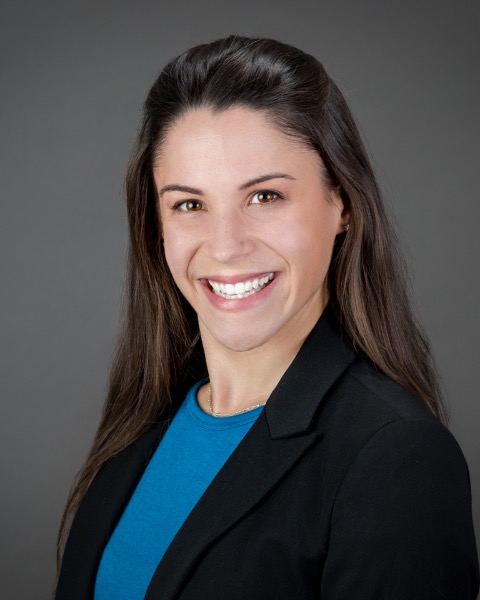Tactical Strength and Conditioning
(12) PSYCHOLOGICAL SELF-REPORT QUESTIONNAIRES NOT ASSOCIATED WITH DECREMENTS IN PHYSICAL PERFORMANCE IN SPECIAL OPERATIONS UNIT TRAINING

Jeremy A. Ross, M.Ed., CSCS, CPSS*D
Assistant Professor
University of Kentucky Sports Medicine Research Institute
Wilmington, North Carolina, United States- DR
Don L. Rooks
Captain
US Army
Lexington, Kentucky, United States - JW
Joshua D. Winters
Associate Professor
University of Kentucky
Wilmington, North Carolina, United States - MH
Matthew C. Hoch
Professor
University of Kentucky
Lexington, Kentucky, United States - RB
Riley Bergin
Doctoral Candidate
University of Kentucky
Lexington, Kentucky, United States 
Caitlin E_W Conley, PHD, ATC
Assistant Professor
University of Kentucky
Lexington, Kentucky, United States- TD
Tatiana Djafar
Assistant Professor
University of Kentucky
Wilmington, North Carolina, United States - RS
Ryan Sheppard, PhD
Lieutenant Commander
United States Navy
Camp Lejeune, North Carolina, United States - CF
Christopher Flaherty
Associate Professor
University of Kentucky
Lexington, Kentucky, United States 
Nicholas Heebner, PhD, ATC
Associate Professor
University of Kentucky
Lexington, Kentucky, United States
Podium Presenter(s)
Author(s)
Special Operations Forces (SOF) unit training (UTP) is known to be physiologically and cognitively demanding and has been hypothesized to elicit non-functional overreaching (nFOR). Coaches have developed screening techniques to identify factors associated with nFOR in athletes, however not all are appropriate in tactical settings. Psychological self-report (PSR) questionnaires are a popular choice to identify overreaching in athletes, but it remains uncertain whether this method can be applied to SOF operators.
Purpose: To determine if PSR questionnaires are sensitive to nFOR during UTP.
Methods: 54 male, active duty SOF operators (Median age: 28.2 yrs, Mass: 89.4 kg, Height: 1.80 m, Yrs of service: 8.6) completed an operational preparedness assessment consisting of performance measures and PSR measures before and after an intense 8-month UTP. The performance assessment consisted of measures of body composition (BF%), pro agility (PA), vertical jump (VJ), 30s non-motorized treadmill sprint (AnC), 30 yd sprint (30yd) with a 10yd split time (10yd), medicine ball toss, isometric midthigh pull (IMTP) and 5-minute non-motorized treadmill run (AC). PSR measures included depression (PHQ-8), Pittsburgh Sleep Quality Index (PSQI), Stanford Sleepiness Scale (SSS), PTSD Checklist-Military (PCL-M) and the five-component Defense and Veterans Pain Rating Scale (DVPRS). Change scores were calculated from pre- and post-UTP. Wilcoxon Signed-Rank Tests and t-tests were used to determine median/mean differences. Spearman’s rank correlations were calculated between change scores for performance and questionnaires. Alpha was p< .05 a priori.
Results: Results are reported with median change and Cohen’s d or Common Language Statistic (CL) for parametric or nonparametric variables respectively. Subjects demonstrated poorer scores in BF% (p=.01, median +1.1%, CL=.727), PA (p=.02, median +0.1s, CL=.659), VJ (p< .01, median -0.5cm, CL=.255), AnC (p< .01, median -16.9 yd, CL=.158), 10yd (p=.02, median +0.5s, CL=.614) and 30yd (p< .01, median +0.1s, CL=.628). Improvements were observed in IMTP (p=0.01, +11.3kg, d=.402), and DVPRS subscales sleep (p < .01, median -1.0, CL=.313), mood (p=.02, median -1.0, CL=313) and stress (p=.01, median -0.5, CL-.296). Changes in PA were significantly correlated with alertness (r=.33), DVPRS-mood (r=.35), and DVPRS-stress (r=.42). Changes in AC were significantly negatively correlated with alertness (r=-.71).
Conclusions: Subjects showed decreased performance in multiple anaerobic tests consistent with nFOR, however correlations between these changes and PSR were limited. Wellness questionnaires do not appear to be sensitive to nFOR in SOF operators.
PRACTICAL APPLICATIONS: Coaches should be aware that UTP could result in nFOR in SOF operators. Coaches should exercise caution using PSR to screen for nFOR. More research is needed to determine if other measures, such as physiological screens, would be more sensitive to nFOR in this population.
Acknowledgements:
This research was supported by the Office of Naval Research N00014-18-C-2025. The content is solely the responsibility of the authors and does not necessarily represent the official views of the Office of Naval Research or the US Navy.
